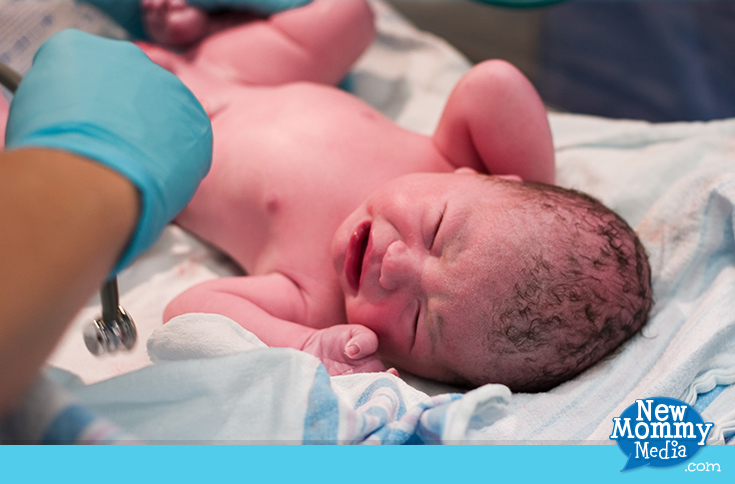Delayed Clamping of Umbilical Cord
In this article:
- What happens during delayed cord clamping?
- What are the benefits to delayed cord clamping?
- Are there any risks to delayed cord clamping?
- When would delayed cord clamping be inappropriate?
 If you’re curious about delayed cord clamping and want to know the pros and cons, you’ve come to the right place. Clamping the cord separates the baby from the placenta and it is usually done immediately after birth, but recently there’s been a move to delay the clamping process. Certified Nurse Midwife Anne Cooper gives us the 411 on delayed cord clamping, so keep reading to learn more.
If you’re curious about delayed cord clamping and want to know the pros and cons, you’ve come to the right place. Clamping the cord separates the baby from the placenta and it is usually done immediately after birth, but recently there’s been a move to delay the clamping process. Certified Nurse Midwife Anne Cooper gives us the 411 on delayed cord clamping, so keep reading to learn more.
What happens during delayed cord clamping?
Delayed cord clamping is not the norm, so usually after a baby is delivered, clamps are immediately put on the umbilical cord. This stops the flow of blood to/from the placenta and the baby. With delayed cord clamping, the clamps will be put on after 1-3 minutes or after the cord is done pulsing. The timing often depends on the provider.
What are the benefits to delayed cord clamping?
Cooper says that after the baby is born, the umbilical cord continues to pulse, and one of the benefits is that the baby gets what’s left over in the cord. Immediately clamping the cord can prevent the baby from receiving all of the red blood cells, nutrients, and stem cells that remain in the umbilical cord. Waiting to clamp the cord can result in a lower risk of anemia and higher hemoglobin levels during the first year. And when it comes to premature infants, the American College of Obstetrics and Gynecology (ACOG) specifically recommends delayed cord clamping.
In terms of benefits to the mom, she gets to hold the baby and have skin-to-skin contact vs. having the baby weighed and measured right away.
TIP: The umbilical cord typically stops pulsating within 10 minutes after birth. Want more information about delayed cord clamping? Listen to our episode or read our transcript!
Are there any risks to delayed cord clamping?
In the past, there was a concern about maternal bleeding, but studies have not supported that delayed cord clamping causes any increase maternal hemorrhage. Another potential risk is that the increase in red blood cells from delayed cord clamping may increase rates of neonatal jaundice.
When would delayed cord clamping be inappropriate?
With a C-section, delayed clamping can get a little tricky due to the risk of bleeding. However, your doctor may be able to perform something called cord milking which will help your baby get extra blood from the cord.
Cooper also says that if a baby needs resuscitation at the warmer or if meconium is present and suctioning needs to be performed, then delayed clamping might not be an option.